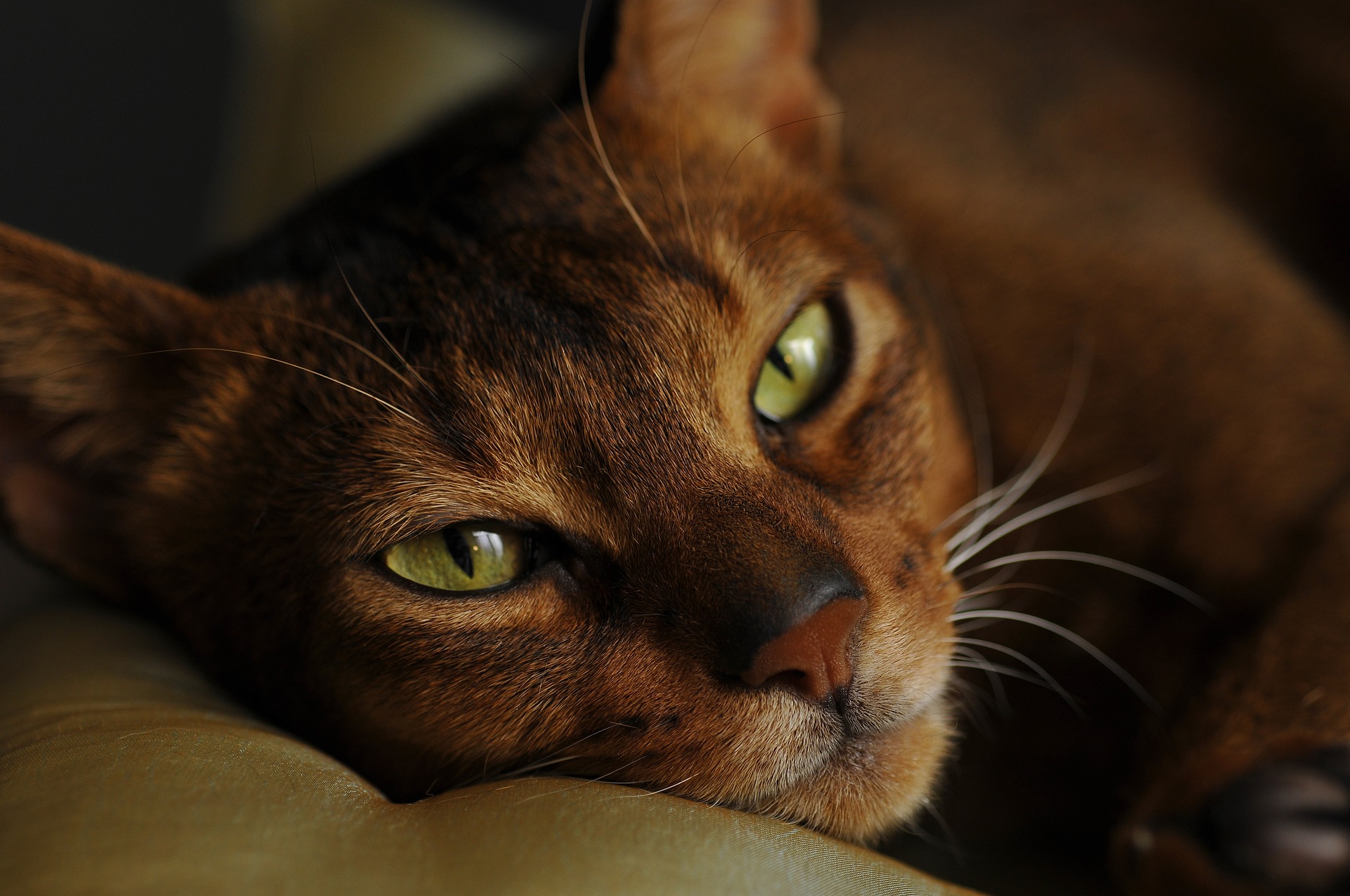Animals have been a part of existence longer than humans first walked the earth. Some have braved the vices of nature and the never-stopping gears of time to generationally evolve to the present day while others have fallen to the cruel fate of extinction. Nature’s selection has seen to it that everything in existence has its place and natural function. For instance, animals play a critical role in the successfully efficient functioning of the eco-system.
To some religions and communities around the world; however, some animals hold more profound value than their typical animal purposes. For many, animals are majestic and beautiful creatures, but to them, they represent a more elaborate and sacred icon.
Here are 5 Sacred Animals Around the World;
1. Abyssinian Cat

Today, cats are considered to be one of the most adorable and loving creatures to have as a pet. They have been known to make worthy companions for both children and adults while being useful around our homes by keeping away unwanted pests and reptiles.
The Abyssinian Cat characterized by their slender legs, a long tapering tail, short finely textured and the cutest little red nose, is an agile domestic cat probably of Egyptian Origin and held to be of sacred value to the ancient Egyptians. They were known to be of quiet, affectionate yet of shy nature around strangers.
It is not very common that killing cats would attract a death sentence; this is the kind of fate that awaited anyone heartless enough to kill a cat in ancient Egypt. Some cats were as well mummified upon their death. It is no wonder that ancient Egypt was among the first places to domesticate these feline creatures.
2. Xoloitzcuintli Dog

Wouldn’t it be an animal conversation without man’s best friend featuring somewhere in there right? Well, apart from being one of the world’s most domesticated animal, either as a pet or security measure, dogs are monumentally revered in some cultures around the world, especially in the Asian continent.
The Xoloitzcuintli dog species, also widely known as the Mexican hairless dog, has been around for a remarkable over 3,500 years. As far back as during the Aztec times, this species held an unusually high standard of sacred regard as compared to other dog species. Getting past the tongue-twisting name, this particular species was believed to have supernatural powers that considerably set them a level above the rest. It was thought that with the companionship of these dogs, evil spirits were wise to stay clear of that particular homestead lest they risk being righteously shredded to spiritual shreds and condemned back to their oblivious abyss. To this day, some communities in Central America still believe in the Xolo’s ability to heal.
Egyptians as well were known for their undeniable love for these canine companions and considered them of high value. It is safe to say that dogs are more than just pets.
3. Aztec Serpent

Snakes are known to inspire terror and crippling fear into the hearts of most people than not. The prospect of encountering an Aztec Serpent would therefore not be among most people’s items on their bucket list. This is probably owing to their unusual physical nature which is profoundly highlighted by a second head in place of what would have usually been a tail as is with most known snake species. A retrospective look at the religious doctrines of the Gnostics, serpents have their defined place in existence. In the Anahuac culture, the Aztec Serpent through the symbolic image of it devouring its tail in an artistic expression of a divinely hidden message, its presence illustrates the Mayan idea of the noble serpent consuming the human soul and spirit, or finally, the sexual flames consuming the animal ego, and in doing so, completely obliterating it and reducing it to ashes.
In North America, for instance, the Hopi community have generationally held snake-themed traditional ceremonies believed to enhance fertility levels. Through performing annual dances to unite serpentine spirits, the Hopi people think this is an effective way of renewing nature’s fertility.
In India, the Nag Panchami festival is a special occasion organized to celebrate snakes as well as the Hindu deities related to them. It might not change a lot of perceptions about this reptilian creature, but you might be thinking of some few choice words before describing your thoughts about a snake.
4. Bhoomi Cow (Sacred Cow)

We’ve all heard of the saying, “Holy Cow!”, referred to while expressing an overwhelmingly shocked or surprised sentiment. Well, there are actual cows considered to be just that in the literal sense of the phrase by some cultures around the world, especially the Hindu culture. Sacred cows are highly regarded by some specific or particular Hindu people and are treated with utmost genuine respect in those specific cultures. As such, consuming meat from cows is strictly prohibited and could potentially attract grave consequences for those who indulged.
In Hinduism, the Hindu goddess, Bhoomi, is idolized and physically expressed in the form of a cow for people to worship and ceremoniously offer appreciative tokens or gestures in the hope of gaining favor in return. The sacred cow representing the goddess Bhoomi, who in turn is a godly representation of Earth, is deeply respected and viewed as a loving maternal figure providing essential care to the people of these particular Hindu communities. It is a widely known fact among the Hindu people to utilize the inspiration of strength and gentle care shown by cows as is thought to be within their nature.
5. The White Elephant

Lastly, there’s the largest land mammal on earth. These gigantic creatures, by nature, fit the description of a gentle beast. Owing to their unique attributes of dedicated love, care, serenity, wisdom, loyalty and wisdom, the elephant is considered to be one of the most remarkably intriguing creatures on our blessed planet.
Also known as the albino elephant, the White Elephant is quite merely an extraordinarily remarkable mammoth creature. Often associated with royalty and influential figures like Than Shwe, who is the self-proclaimed heir to the Burmese throne, and Spiro Agnew, the former United States president, the White Elephant was known to be a possession of the highest regard and would elevate a persons’ societal status. These magnificent creatures even though not distinctly or purely white in color, rather reddish-brown or light pink, are symbols of moral purity as is referenced Thai dialect, “chang samkhan” which essentially translates to a being pure of heart in nature. One encounter with these majestic creatures will reveal a sight to behold, and the memory will probably be permanently reserved somewhere in your subconscious mind.
Elephants have been and will possibly continue being an essential and significant icon in some communities like the South Indian community, the Persian communities, African cultures and several other cultures as well around the world. They have been immortalized in various temples as a representative of a sacred presence.

































